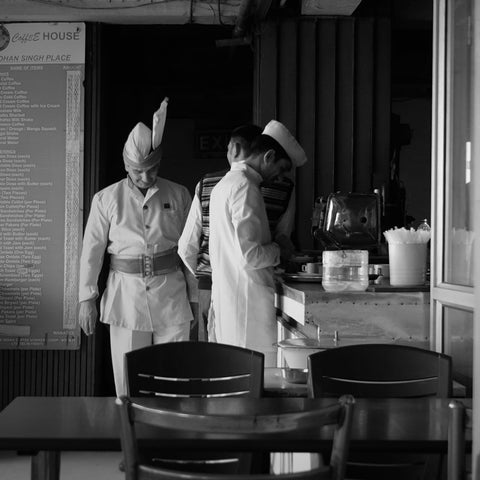You’ve read plenty about how coffee made its way to India and what makes Indian coffee special, but there are some pivotal moments that have influenced the trajectory of India’s coffee journey.
The establishment and growth of Indian Coffee House is one such crucial force.
Let’s take a look at what the Indian Coffee House is and how its essence has seeped into the country’s coffee culture.
What is Indian Coffee House?
A chain of restaurants spread across India, Indian Coffee House stands the test of time.
They are operated by worker cooperatives, and there are nearly 500 branches of Indian Coffee House across the country today.
As the primary vehicle of cultural discourse, the Indian Coffee House played a great role in not just fueling the popularity of coffee shops in India but also increasing involvement in the public sphere.
History of Indian Coffee House
Indian Coffee House came into being during the British colonial era. The first ICH branch was opened in Churchgate, Bombay in 1936 by the Coffee Cess Committee. Then, it was called India Coffee House.

It’s not like there were no coffee shops in India before ICH. But discriminated against by the British and barred from entering those establishments, Indians couldn’t sample a glimpse of the café culture until India Coffee House was formed.
These were operated by the coffee board, which was a government body.
Amidst all the political changes that washed over the country, Indian Coffee House hit an obstacle in its path. The coffee board was planning to shut down these coffee houses at one point.
On the recommendation of the then-political leader, worker co-ops were founded to oversee the running of these coffee houses, and the authority was finally handed over to them. That’s when it went from being called India Coffee House to Indian Coffee House.
There are as many as 13 co-ops today that manage the operations of the hundreds of branches in India.
Significance of Indian Coffee House in India’s Coffee Landscape
Indian Coffee House has always reflected the rhythm of Indian society.
Owing to the large middle-class population, the Indian Coffee House’s menu and atmosphere proved to be a great reprieve from daily routine; a moment of bliss stolen from the drudgery painting their lives.

As the years passed by, the number of branches grew tenfold, creating more job opportunities as well as interest in the beverage.
The commercialisation of coffee worked hand in hand to bolster the tides of India’s coffee production.
With poets, writers, and celebrities streaming into Indian Coffee Houses all over India, they gained even more popularity.
These coffee houses have housed (and possibly nurtured) many thought leaders, giving the literary and political identity of the country a renewed vigour.
In fact, it was as common to find political discussions and movements brewing in ICH as cups of coffee itself so much so that several coffee house branches were in dire straits in the 20th century.
From the way the employees of the coffee houses move up the ladder to the cultural nuances of these shops, one can easily observe that the Indian Coffee House has great significance in India’s history.
As much as the distribution and consumption of coffee are at the core of ICH, over time, they have come to symbolise the values that the country is known for - a sense of community, the celebration of life, and hard work.
You could still step into an Indian Coffee House and be instantly transported to the past - from its furniture to the aesthetics, the nostalgia is embedded deep in the walls of the coffee shop.
Even after decades have passed since the first branch was opened, ICH continues to adapt to the times without ever really casting aside the essence of what made it special since the beginning.

Leave a comment: